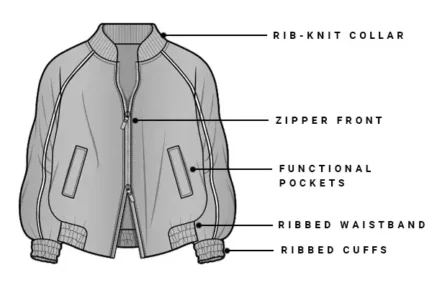Technology is the foundation of human advancement, and it has helped bring businesses, economies, societies, societies, and economies up. But with time certain technologies are susceptible to deterioration or are even outdated. With the speed of technology’s advancement, there is no limit to the possibilities and often, technology becomes outdated. In this article we’ll look into the reasons for the vulnerability of certain technologies as well as their effects on society and ways to protect these essential technologies for the next generation.
What is Endangered Technology?

Endangered technology is a term used to describe any technology at risk of being obsolete or completely disappearing. It could be anything from obsolete hardware and software to old-fashioned methods or machines which are not in line with the current demands. With the rapid advancement of technology the majority of older technology are unable to keep up and as a result they are being eliminated in order to create better alternatives that are more affordable and cost-effective.
Why Are Some Technologies Becoming Endangered?
A variety of reasons can cause the decline of particular technologies. This includes:
- Obsolescence: As more advanced technology is developed, and has more efficiency, previous technologies are obsolete. For example, older computers or devices may not work with most recent software or networks which makes them unsuitable with the modern day demands of life.
- Cost: Keeping technology that is outdated costs money. With businesses and consumers seeking solutions that are cost-effective, keeping outdated technology is often greater than its benefits.
- Lack of Support age and is less popular and less popular, it’s no longer supported by developers, manufacturers or communities who ensured its continued operation. Without software updates or physical components of technology, it becomes difficult to operate and maintain.
- Changes in Needs: As the years advances the needs and demands of our society shift. Technologies that were once thought to be advanced may soon become outdated as new issues and demands emerge. For example, the technology that was designed for traditional industries may not be suitable to the current digital economy or the green economy.
Reasons Behind the Decline of Technology
The decline in technology could be explained by a mix of social, economic, as well as technological issues. The primary factors are:
- The need for market-based services which is generated by both consumer and business demands, is the primary main driver behind technological advancements. If a product or service doesn’t meet the requirements of the present or market demand, it will become less appealing to consumers.
- Innovation: The most recent technologies are more efficient and speedier to surpass older technology. In the current fast-paced world of technology keeping up-to-date is essential which often leads to demise of old technology.
- Environmental concerns Certain technologies are no longer used because of their negative environmental impacts. For instance, older equipment or processes can use up greater amounts of energy or create more waste, which prompts industries to choose more sustainable options.
How Technology Becomes Endangered Over Time

Technology doesn’t go away in a single day. It’s typically a continuous process that includes:
- As technology improves the older systems become outdated and their use rate decreases. This could result from a deficiency capability, limitations on performance and compatibility issues.
- The development of technology is sluggish: with smaller numbers of people using older technology, there’s very little incentive for developers of technology to improve or continue assisting with it. As the pace of growth slows technology gets less efficient and more susceptible to failure.
- Key personnel retire. In some cases, people who invented or were involved in the development of older technologies quit or switch to more modern initiatives. Without this information it can be difficult to stay current or maintain the advancements in technology.
Impact of Endangered Technology on Society
Technology that is under threat could have a significant impact on our daily lives and industries. As technology deteriorates it could leave gaps that will be hard to bridge. Here are some of the most important effects:
Effects of Endangered Technology on Industries
In many areas older technology is essential. For instance when it comes to manufacturing, old machinery could still be vital for certain processes. When the equipment is damaged or damaged, this can affect supply chains, increase cost, and possibly stop production. Industries like telecommunications and healthcare also depend on older technology, which is expensive to replace and may result in operational problems in the event that they are removed too soon.
Consequences of Losing Endangered Technology
The disappearance of access to specific technologies could result in a range of negative consequences:
- Insufficient knowledge of the past. Certain technologies from the past provide the basis for the entire industry; if these technologies cease to exist then will also the knowledge that goes with them.
- A greater reliance on new technology. The dependence on the latest technologies can cause a dependence on a small number of major businesses, making industries more susceptible to disruptions should these businesses run into problems.
- Cultural loss: In some cases the technologies that are endangered are part of an ancient culture. In the event of their disappearance, these techniques could result in the demise of the traditional industries or crafts which have shaped society for long periods of time.
How Endangered Technologies Impact Daily Life
Technologies that are at risk can affect our lives in subtle, but fundamental ways. The decline of old technology can result in:
- Repairs are becoming more difficult to access as technology gets outdated and the process of finding repair service providers becomes increasingly difficult. This could result in the increasing use of products that are disposable rather than those that are reusable and repairable.
- Skill gaps in knowledge needed to operate older technology could also decrease as people transition to more modern systems. This could result in gaps in skills that leaves younger generations without the abilities to operate older systems.
The Role of Endangered Technology in Modern Society

Despite their decline however, the technology that is threatened is still a vital aspect of our society. A lot of them are used in specific areas that deal with conservation as well as other fields where nostalgia or tradition play an important part. These technologies could provide valuable knowledge about the ability to change, adapt and resilience and the importance of achieving an equilibrium between innovation and tradition.
Endangered Technology in the Digital Age
Modern technology has contributed to the loss of many technologies. Digital technology is more adaptable and flexible than traditional technology that makes it harder to keep pace with. But, some technologies are relevant in today’s digital world.
What Technologies Are at Risk of Becoming Endangered?
Technologies that rely upon analog technology, for example cassette tapes and VHS or film photography are at risk. Similar to older operating systems like Windows XP, or legacy enterprise resource planning (ERP) systems they are also at risk.
How Digital Transformation Affects Technology Longevity
Digital transformation is accelerating the use of newer technology making outdated technologies obsolete. As an example, the move from physical servers to cloud-based servers has rendered a majority of storage systems used to store data ineffective. As more and more businesses adopt digital technology, traditional systems will see a dramatic reduction.
Endangered Tech in the Age of Artificial Intelligence

Artificial Intelligence (AI) is rapidly becoming the driving force behind technological innovation. As AI-powered technology becomes more sophisticated, conventional methods like manual data entry as well as the traditional systems for customer assistance are becoming increasingly eliminated by automation systems.
The Survival of Traditional Technologies in the Digital Age
Certain techniques from the past have managed to withstand the age of digital by adapting. For instance analog photography has experienced an increase in popularity in recent years in a market that is trying to revive the “retro” aesthetic. Similar to traditional radio, it continues to flourish despite the massive impact of streaming services that are digital.
Preserving Endangered Technologies
The protection of threatened technologies is crucial to ensure the diversity of our technological landscape and ensure that the knowledge that we’ve accumulated isn’t lost.
Why We Need to Preserve Endangered Technology
The preservation of technology that has been lost is about keeping the historic knowledge, cultural heritage as well as ensuring an appropriate balance between advancement and preservation. In preserving these technologies will ensure that future generations will be able to benefit from the past.
Efforts to Save Endangered Technologies
Many museums and institutions were established to protect technology that is in decline. They work to preserve old software, fix old equipment, and develop educational programs that teach younger generations how to apply traditional techniques.
Can we safeguard threatened technologies from depletion?
To safeguard the existence of technologies that are endangered industries may:
- Create programs that keep traditional systems
- Support firms that specialize in restoring and preserving the old technology
- encourage the creation of open-source platforms in order to let older technologies be accessible.
Importance of Safeguarding Technological Heritage
Technology is as significant as other forms of technology that make up our culture. It is a reflection of our past and provides insight into how modern technology evolved. The preservation of this heritage will ensure that the generations to come can benefit and gain from it.
Endangered Technology and Innovation
Innovation does not necessarily mean the removal of outdated technology. In some cases it is possible to give new life to technology that’s on edge of extinction.
How Innovation Impacts Endangered Technology
Innovation can bring back outdated technologies by increasing their efficiency by adapting to evolving requirements and integrating them with the latest technology. For instance, retrofitting old factories with modern sensors and automated systems could aid in conserving traditional manufacturing methods and increase efficiency.
The Relationship Between New Tech and Older Technologies

The link between contemporary technology and traditional ones is often mutually beneficial. Modern technologies are built on technological advances and the knowledge accumulated by earlier generations. Without the technological advancements in the past, today’s technological breakthroughs wouldn’t be possible.
Reviving Endangered Technologies Through Innovation
Innovation can give a new hope for dying technologies. For example, certain analog technologies, like vinyl records and typewriters have seen a revival due to new technologies, bringing in tiny but committed markets, while keeping culture.
Challenges in Innovating While Preserving Older Technologies
One of the biggest difficulties in balancing preservation and innovation is the expense. The revival of outdated technologies typically requires significant investment and balancing progress and preservation can be an issue.
Final Thought
Technologies that are endangered are an essential element of our culture and industrial time. While advancement will continue, it is important to do our part in safeguarding and conserving these valuable resources. If we can understand the root causes of technology’s decline and find ways to improve it, while still retaining traditional technologies. If we do we will be able to ensure that these technologies remain an integral part of our future.
FAQs
Q1. What are the motives behind why certain technologies are thought to be a threat?
technology that’s thought to be in danger is typically viewed as obsolete due to technological advancements and also the high cost of maintenance and changes in demand.
Q2. What are the consequences of losing technology threatened?
A slowdown in technology could result in the loss of knowledge, gaps in the skills and disruptions in industries that still rely on obsolete technology.
Q3. How can we safeguard threatened technologies?
Conserving technology that is endangered involves keeping old equipment in good condition as well as restoring outdated hardware and creating educational programs to transfer information.
Q4. Innovation is a way to keep technology from being destroyed?
Innovation is sure to give new life to old technologies and make them more able to meet today’s requirements or improve their performance to compete in new markets.











Leave a Comment